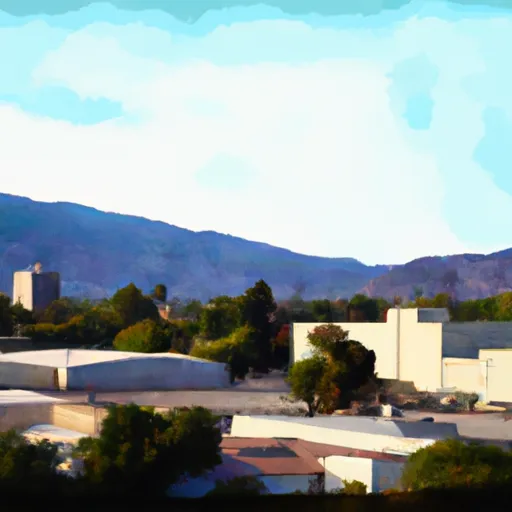-
 Snoflo Premium
Snoflo Premium
Get unlimited access to all our content
With no Ad interruptions! - Start Your Free Trial Login with existing account
Seiad-Valley
Eden Index
Climate
9.3
•
Recreation
8.9
•
Community
0.5
•
Safeguard
7.0/10

Seiad-Valley is a small community located in Siskiyou County, California. Situated in the Klamath Mountains, it offers a picturesque setting with a diverse climate and abundant recreational opportunities. The climate in Seiad-Valley is characterized by warm and dry summers, with temperatures often reaching the mid-80s Fahrenheit, and mild winters with temperatures averaging around 40-50 degrees Fahrenheit. The area is known for its beautiful forests and scenic landscapes, which make it an ideal destination for outdoor enthusiasts.
Seiad-Valley is surrounded by numerous rivers, including the Klamath River, which flows through the town. This provides excellent opportunities for fishing, boating, and swimming. The hydrology constituents in the area include various creeks and tributaries, contributing to the rich biodiversity of the region.
The town is a gateway to the Marble Mountain Wilderness, a vast expanse of mountains, lakes, and meadows, offering unparalleled opportunities for hiking, camping, and wildlife viewing. The Pacific Crest Trail also passes through Seiad-Valley, making it a popular destination for hikers and backpackers.
Overall, Seiad-Valley offers a stunning natural environment, a favorable climate, and a wide range of outdoor activities, making it an attractive destination for nature lovers and adventure seekers alike.
What is the Eden Index?
The Snoflo Eden Index serves as a comprehensive rating system for regions, evaluating their desirability through a holistic assessment of climate health, outdoor recreation opportunities, and natural disaster risk, acknowledging the profound impact of these factors on livability and well-being.
Climate Health Indicator (CHI): 9.3
Seiad-Valley receives approximately
1368mm of rain per year,
with humidity levels near 73%
and air temperatures averaging around
12°C.
Seiad-Valley has a plant hardyness factor of
8, meaning
plants and agriculture in this region tend to thrive here all year round.
By considering the ideal temperature range, reliable water supplies, clean air, and stable seasonal rain or snowpacks, the Climate Health Indicator (CHI) underscores the significance of a healthy climate as the foundation for quality living.
A healthy climate is paramount for ensuring a high quality of life and livability in a region, fostering both physical well-being and environmental harmony. This can be characterized by ideal temperatures, reliable access to water supplies, clean air, and consistent seasonal rain or snowpacks.
Weather Forecast
Streamflow Conditions
Klamath
Area Rivers
Klamath
Snowpack Depths
Klamath
Reservoir Storage Capacity
Klamath
Groundwater Levels
Recreational Opportunity Index (ROI): 8.9
The Recreational Opportunity Index (ROI) recognizes the value of outdoor recreational options, such as parks, hiking trails, camping sites, and fishing spots, while acknowledging that climate plays a pivotal role in ensuring the comfort and consistency of these experiences.
Access to outdoor recreational opportunities, encompassing activities such as parks, hiking, camping, and fishing, is crucial for overall well-being, and the climate plays a pivotal role in enabling and enhancing these experiences, ensuring that individuals can engage in nature-based activities comfortably and consistently.
Camping Areas
| Campground | Campsites | Reservations | Toilets | Showers | Elevation |
|---|---|---|---|---|---|
| Oak Bottom | 26 | 1,517 ft | |||
| Sarah Totten | 23 | 1,535 ft | |||
| Norcross - horse | 4 | 2,360 ft | |||
| Bridge Flat | 4 | 2,251 ft | |||
| Fort Goff | 5 | 1,290 ft | |||
| Grider Creek - horse | 10 | 1,726 ft | |||
| Curly Jack | 12 | 1,080 ft | |||
| Indian Scotty | 44 | 2,514 ft | |||
| Sulphur Springs | 6 | 2,206 ft | |||
| Lovers Camp - horse | 8 | 4,157 ft |
Catastrophe Safeguard Index (CSI):
The Catastrophe Safeguard Index (CSI) recognizes that natural disaster risk, encompassing floods, fires, hurricanes, and tornadoes, can drastically affect safety and the overall appeal of an area.
The level of natural disaster risk in a region significantly affects safety and the overall livability, with climate change amplifying these risks by potentially increasing the frequency and intensity of events like floods, fires, hurricanes, and tornadoes, thereby posing substantial challenges to community resilience and well-being.
Community Resilience Indicator (CRI): 0.5
The Community Resilience Indicator (CRI) recognizes that education, healthcare, and socioeconomics are crucial to the well-being of a region. The CRI acknowledges the profound impact of these elements on residents' overall quality of life. By evaluating educational resources, healthcare accessibility, and economic inclusivity, the index captures the essential aspects that contribute to a thriving community, fostering resident satisfaction, equity, and social cohesion.

